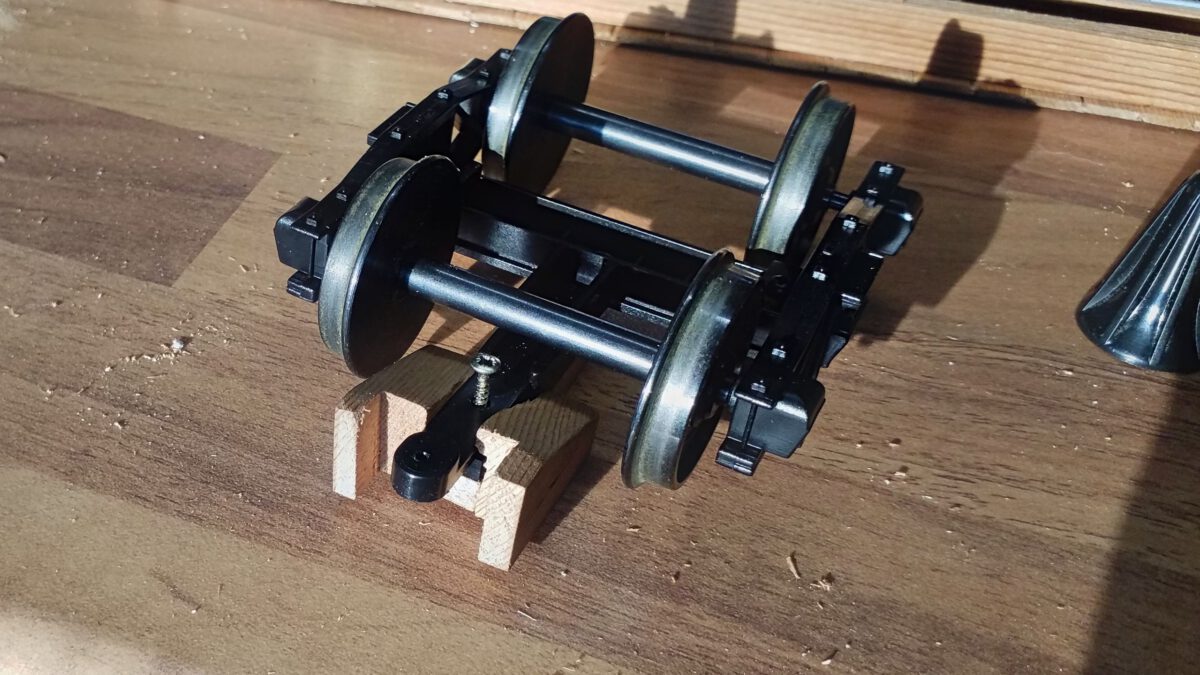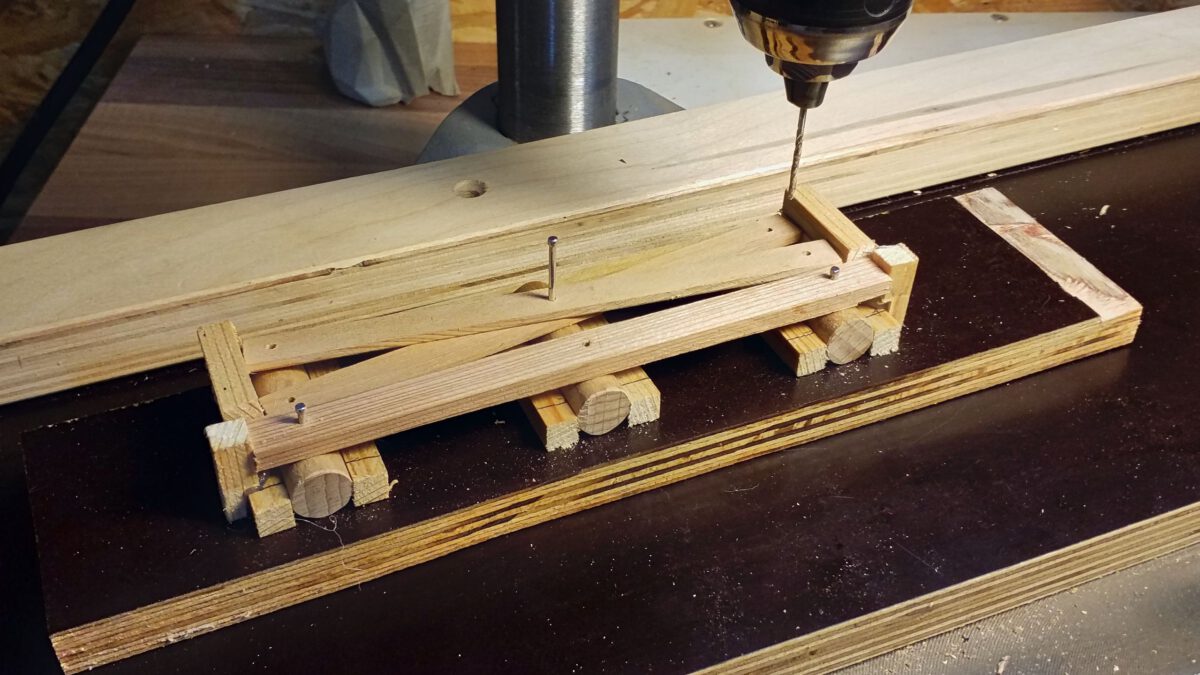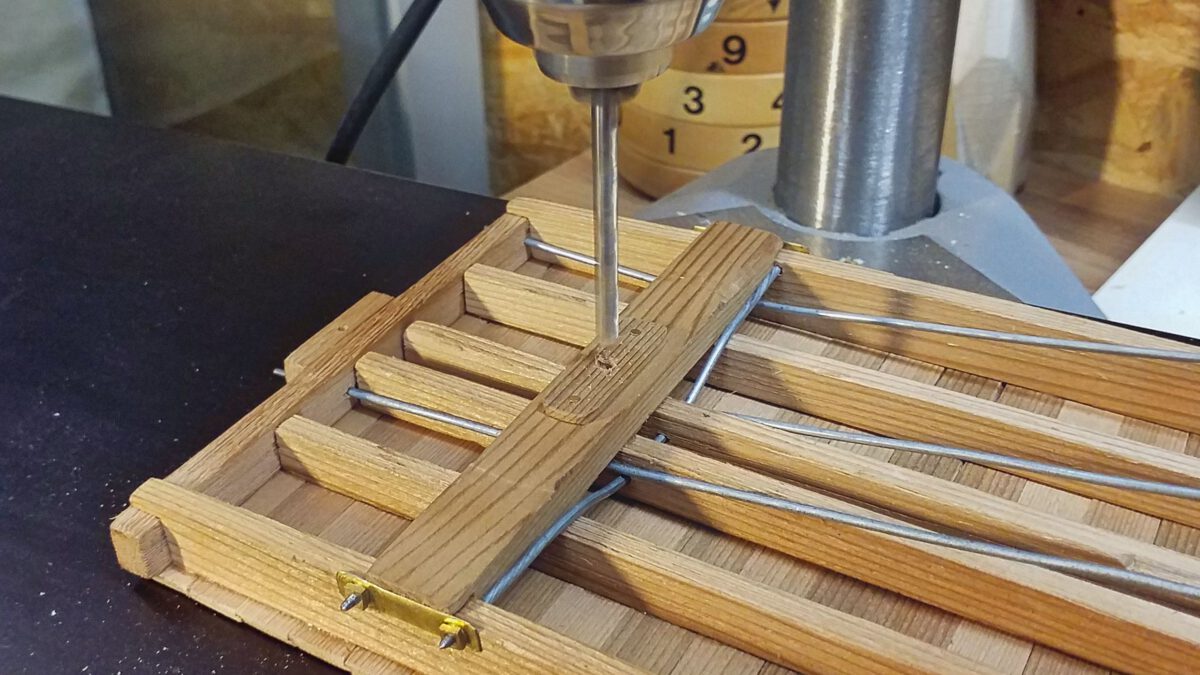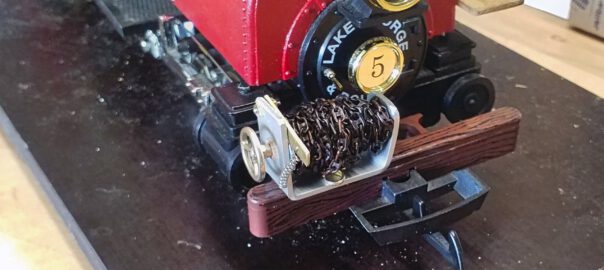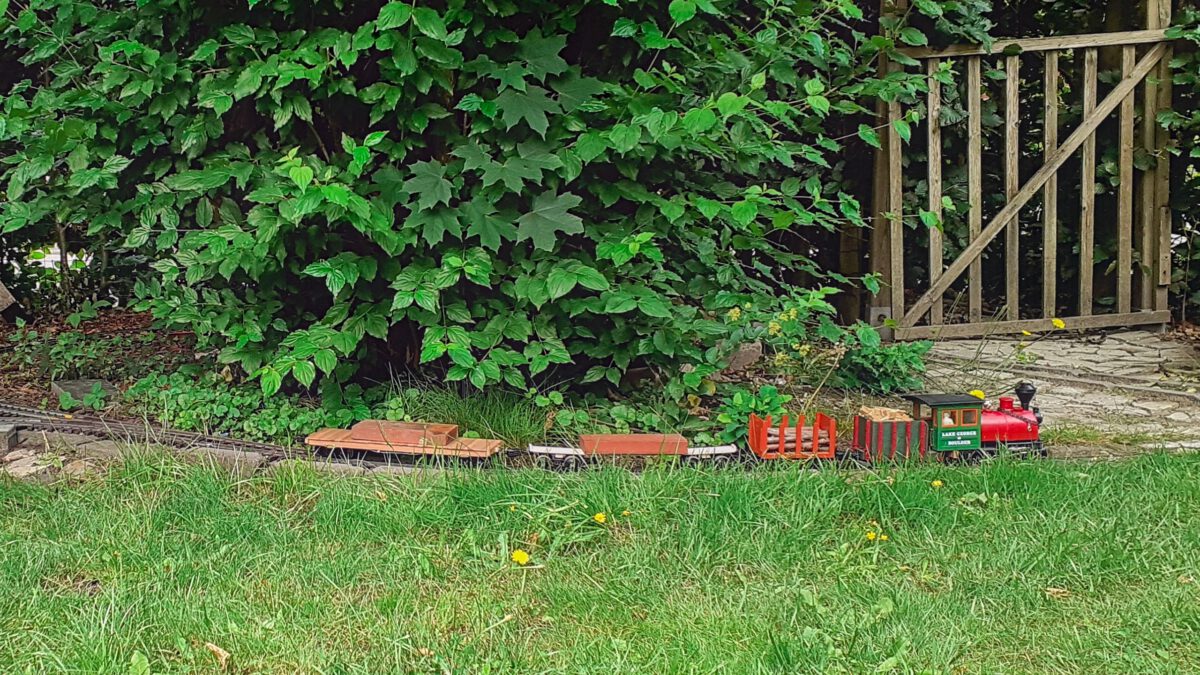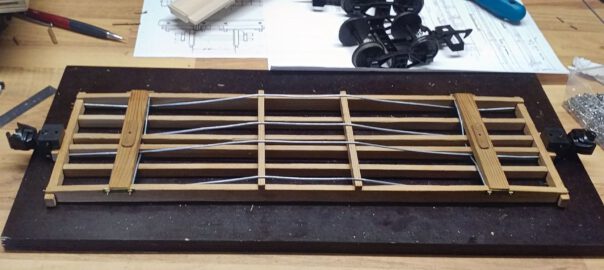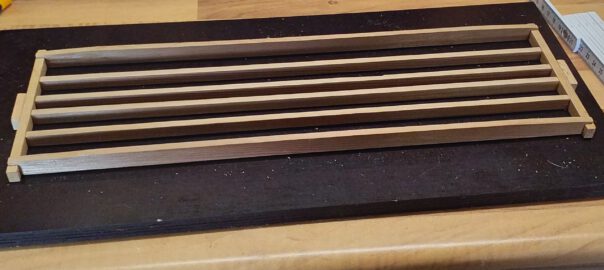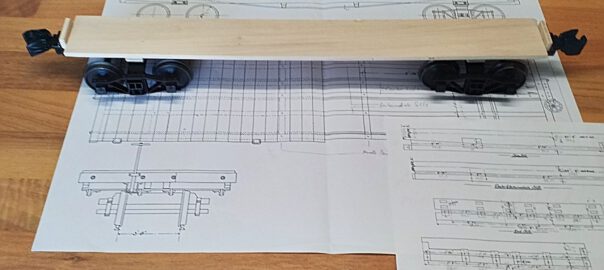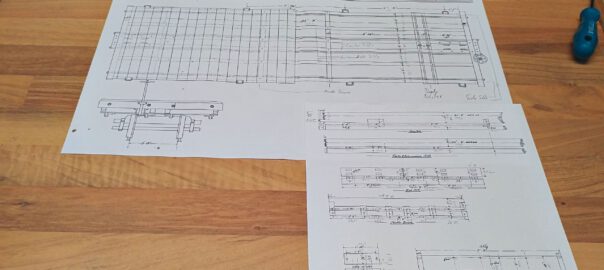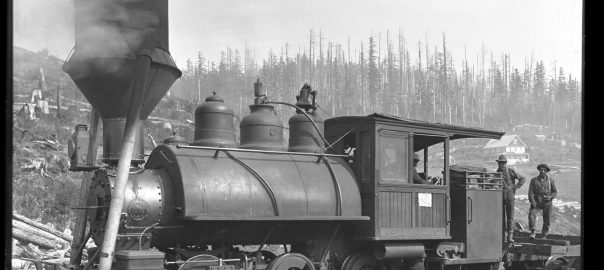Based on my lessons learned during the last operation session, I’ve already started to mount couplers to the bogies. The result works very well, however I’m not quite happy with the looks: too clumsy, too heavy. So I’m trying a more delicate approach for the second coupler.
Category: Model Railway
New Construction Report: Loading Ramp
In order to prepare for the next operation session, I set myself the goal to arrange for some operations. So this time there will be no new waggon, but a loading ramp and some cargo.
The ramp’s design is inspired by Scott Perry’s Blog, who has published a very nice and extensive series. If you look for a step-by-step guide, you can find it there.
Flatcars Prototype: Lessons Learned from the Operation Session
Our Summer Operation Session was a lot of fun, but most of all it was informative. I learned three very important lessons concerning my flatcar prototype:
- Frame-mounted couplers need large radii
- Bogies need clearance for operational reliability
- Bogie-mounted couplers increase reliabilty
No.1 Porter: Chain Winch
Besides other insights, the Summer Operation Session 2020 revealed that my Porter needs a better stowing place for the shunting chain.
On the one hand the chain easily drops from the loco if it isn’t properly secured, on the other hand it’s quite fidgety to fixate the chain at a given lenght. So I more or less spontaneously got the idea to tinker on a chain winch.
The first steps happend on a whin and I was sure that they wouldn’t succeed, that’s why I didn’t take any pictures. But after I realized I was onto something, I made some after the fact.
Summer Operation Session 2020
This operation session was scheduled rather spontaneously and spurred me into building a prototype for a flatcar. Accordingly, I was quite expectant concerning the experience I’d gain with the new waggon.
Since we only had a relatively short time for operations and I was preoccupied with test runs, there are only a few pictures. In return, I learned lots of lessons.
Flatcars Prototype: Floor and Trusses
After preparing the frame and floor boards, construction can continue with the underframe. The main components are the body bolsters, needle beams and trusses. Unfortunately, I don’t have got a complete set of diagrams, so I had to guesstimate concerning the longitudinal and cross trusses. However, it’s not rocket science.
Flatcars Prototype: Materials and Frame
Based on my experiences from the flatcar experiments I’ve decided to construct a prototype for 26′ flatcars. The model is going to be built from red cedar and purchased Piko bogies.
Flatcars: Experiments
Before I start the actual construction of my planned flatcars, I’d like to know first which limits the tracks will pose on them. I’ve only ever known classic model waggons, which have their couplers on beams attached to the bogies. This design ensures high operational reliability because the couplers can follow even the tightest curve radii. However, it’s not a pretty sight.
So I’d like to build a few test waggons in order to learn how the couplers perform when attached to the waggon’s body.
New Construction Reports: Flatcars
For our next operation session I’d like to contribute a few waggons of my own. In that way I will stick to my intentions, that is to focus on a complete train for the time being.
One better starts small. That’s why I’ve picked the construction of freight waggons, precisely: flatcars. The reasons are natural: most US freight waggons based on flatcars or were closely related to them. Furthermore they make the easiest waggons to model, apart from disconnects and skeletons.
Porter: New Smokestack with Spark Arrestor
Since my porter is serving as a working horse in the vicinity of a logging railroad, she’s burning wood, as one might tell by her tender. The original smokestack has only got a small diamond spark arrestor which doesn’t really fit to a wood burning loco.

